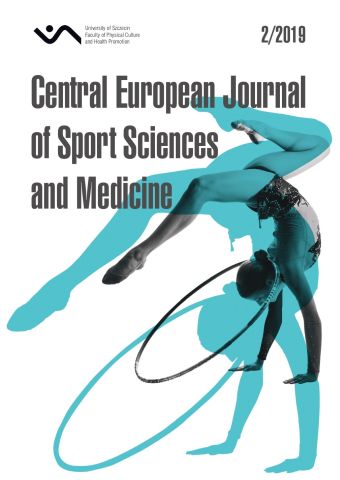
ISSN: 2300-9705
eISSN: 2353-2807
OAI
DOI: 10.18276/cej.2019.2-02




Lista wydań /
Vol. 26, No. 2/2019
Dance as a Catalyst for Stress Busting
| Autorzy: |
Charanya
Gurusathya
Artistic Director, Natyashala School of Bharatanatyam, Pune, India |
| Słowa kluczowe: | stress autism tension self confidence self esteem |
| Data publikacji całości: | 2019-06-31 |
| Liczba stron: | 15 (15-29) |
Abstrakt
Dance is a catalyst for inspiration, for creating awareness of movement and self-expression, and to make a difference in the lives of children and adults. The current generation of kids is undergoing different kinds of stress, academic pressure, peer pressure and monotonous routines. Dance can be a fantastic stress-buster.
While we define meditation as “controlled brain activity”, Dance is surely a form of meditation. When one dances, the brain has to coordinate with the body and mind to completely coordinate between music and movements. Dancing to one’s favorite music and enjoying it, helps an individual focus strictly on the moment they are in. This aids in controlling the release of cortisol hormones from the brain, which helps in lowering stress and tension levels. “When the body feels good, the mind does too”. Dance can be a very therapeutic and healthy way for people to channelize any feeling that they may be experiencing. If anyone is suffering from depression, dance can give an outlet for emotions; connects you to a positive environment. Dance replaces stress hormones with pleasure hormones like endorphins and serotonins.
This paper incorporates the basic principles of learning and reinforcement that are known to be effective methods in helping individuals to dance. The paper attempts to portray the author’s experiences about ‘Dance as a catalyst for stress busting’. The research methodology used are literature survey, inputs in the form of survey and personal experiences of the author.
This paper publishes the results of a survey that was conducted amongst teenagers based on the students of Natyashala School of Bharatanatyam. The survey was primarily oriented to answer whether and how dance acts as a stress buster in their lives.
Another, a practical experience-based approach was conducted as, an in-school Dance Program for children with special needs; catering specifically to children with Autistic disabilities is presented here.
Techniques to inculcate dance as an early intervention for teenagers are also discussed. As one continues to dance, we can see how dancing will naturally develop and increase one’s self confidence and self-esteem, both on and off the dance floor, helping to further reduce the feelings of tension and pressure.
As the awareness for Autism Spectrum Disorder has increased, so have the number of therapeutic approaches. Therefore the most effective treatment or combination of treatments remains inconclusive. Creative movement and dance is a practical and feasible option for children with Autism Spectrum Disorder. This article aims to present a narrative review of the literature for dance and stress and it is hoped that parents, teachers, and educators can gain thorough understanding of how dance can be adapted for autistic children who may be thinking about implementing dance movement therapy into an autistic child's routine.
Pobierz plik
Plik artykułu
Bibliografia
| 1. | Acolin J (2016). The Mind–Body Connection in Dance/Movement Therapy: Theory and Empirical Support. Am. J. Dance Ther.38:311–333.DOI 10.1007/s10465-016-9222-4. |
| 2. | Archer S., Buxton S., Sheffield D (2015).The effect of creative psychological interventions on psychological outcomes for adult cancer patients: A systematic review of randomized controlled trials. Psycho-Oncology. 24:1–10. DOI 10.1002/pon.3607. |
| 3. | Chantal Sicile Kira (January 7, 2014). Autism Spectrum Disorder (revised): The Complete Guide to Understanding Autism. Penguin Random House Company |
| 4. | Dorit Netzer , Minyoung Chang (2019). Creative Stress-Reduction for Urban Working Adults, Journal of Creativity in Mental Health, DOI: 10.1080/15401383.2019.1568940 |
| 5. | Ellen Notbohm (2012). Ten Things Every Child with Autism Wishes You Knew. Future Horizons |
| 6. | European Association Dance Movement Therapy (EADMT) (1994). EADMT http://www.eadmt.com/ |
| 7. | Hanna J.L. (2006). Dancing for Health: Conquering and Preventing Stress. Rowman Altamira; Lanham, MD, USA |
| 8. | Jane Teo (British Ballet Organization, Malaysia) and Ong Puay Hoon (Universiti Malaysia Sarawak, Malaysia) (2015). Dance and Movement as Therapy for Children with Autism Spectrum Disorders (ASD): A Case for Kuching, Sarawak. DOI: 10.4018/978-1-4666-7373-1.ch012 |
| 9. | Judith Lynne Hanna (July 20, 2006). Dancing for Health: Conquering and Preventing Stress. Rowman & Littlefield Publishers, Inc |
| 10. | Paul Foxman (2004). Dancing with Fear: Overcoming Anxiety in a World of Stress 1996. Rowman & Littlefield Publishers, Inc |
| 11. | Payne P., Crane-Godreau M.A. (2015). The preparatory set: A novel approach to understanding stress, trauma, and the body mind therapies. DOI 10.3389/fnhum.2015.00178. |
| 12. | Wiedenhofer S., Koch S.C. (2016) Active factors in dance/movement therapy; specifying health effects of non-goal-orientation in movement. Arts Psychother. 52:10–23. DOI 10.1016/j.aip.2016.09.004. |